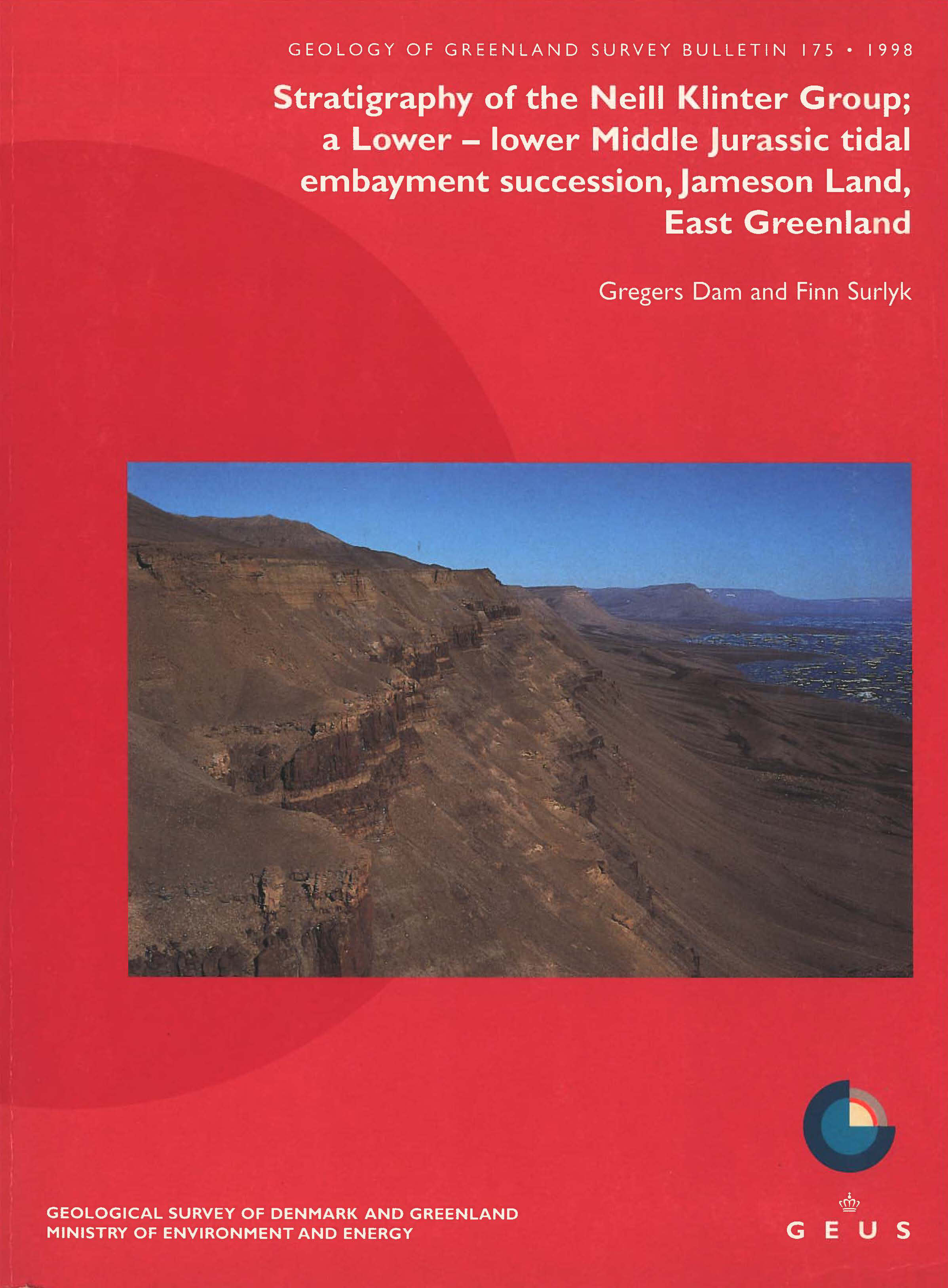Stratigraphy of the Neill Klinter Group; a Lower – lower Middle Jurassic tidal embayment succession, Jameson Land, East Greenland
DOI:
https://doi.org/10.34194/ggub.v175.5026Keywords:
Neill Klinter Group,, Jameson Land Basin,, East Greenland,, Lower – lower Middle Jurassic, lithostratigraphy, sequence stratigraphy, sedimentology, tidal embaymentAbstract
The sediments of the Neill Klinter Group of Jameson Land, East Greenland were deposited in a wide, shallow, wave, storm and tidally-influenced marine embayment situated at the western margin of the Jurassic seaway between Greenland and Norway. The group is formally defined and a new lithostratigraphic scheme is erected on the basis of recent sedimentological, biostratigraphic and sequence stratigraphic studies. The Neill Klinter Formation is changed to group rank; the Rævekløft, Gule Horn and Ostreaelv Members are revised and raised in status to formations, and the Sortehat Formation is redefined and included in the group. The Gule Horn Formation is divided into two new members and the Ostreaelv Formation into seven new members. The Neill Klinter Group is up to 450 m thick.
Sandy and muddy material was transported into the embayment from source areas to the east, west and north. A number of sub-environments are represented in the succession, including: restricted and bioturbated offshore, storm-dominated offshore transition zone, wave and storm-dominated shoreface, storm-dominated sandy shoal, subtidal sand sheet, ebb-tidal delta, tidal channel, wave and storm-dominated lagoon, and ephemeral stream delta.
The Neill Klinter Group consists of seven sequences and is characterised by a near absence of parasequences, interpreted as reflecting high influx rates of sand into the land-locked embayment. Continuous filling of accommodation space and erosion resulted in amalgamation of sedimentary packages, and poor development of facies cyclicity.
Downloads
Additional Files
Published
Issue
Section
License
This article is distributed under a CC-BY 4.0 licence, permitting free redistribution and reproduction for any purpose, even commercial, provided proper citation of the original work. Author(s) retain copyright over the article contents.


